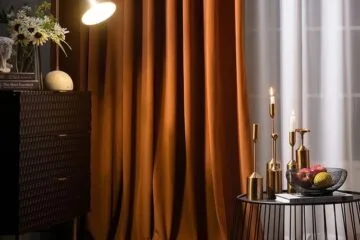While buying furniture, we tend to attach less importance to the upholstery stitches used in them. It is even more important if you are looking to get into upholstery yourself.
But they can create a lot of difference in a furniture piece’s design by accentuating its curves and lines and creating attention-grabbing details. Thus, a basic knowledge of the popular types of upholstery stitches used in furniture can help you make a better choice in terms of the design.
That’s why we’ve put together a detailed guide to the most widely-used stitches in this regard. So, without further ado, let’s get started!
Guide To Upholstery Stitch Types
A variety of interesting techniques are used to create upholstery stitches. Some stitches are strictly functional, and others that are purely decorative. On that note, here are the most popular types of stitching for upholstery:
1. Top-Stitched Seam
Topstitch refers to a line stitched in such a way that you can see it on the right side of the material. And in most furniture, such a stitch is often added parallel to a plain seam.
On a side note, the right side refers to the front or the side of the fabric that’s visible after the stitching is complete.
While this stitch helps draw the viewer’s attention to the area, it also strengthens the original seam as it’s sewed through the seam allowance on the underside. Notably, you can use a top-stitched seam to create several patterns on the upholstery too.
2. Plain Seam
First of all, you should know that a stitch and a seam are technically the same.
That said, the term “seam” is given to a stitch joining two materials, so it’s among the most commonly- used stitch types for upholstered products.
As the stitch is sewn with the right sides of the materials facing each other, only a neat single line is visible from the top. Naturally, the seam allowance is hidden on the wrong side of the material.
As the most basic form of upholstery seam, a plain seam is used in cushion making and upholstery where a sturdy seam is not as important.
3. Lapped Seam
Seam allowances are folded over and aligned with the seams of other fabrics. After that, the fabrics are stitched close to the fold using a top seam. Note that both materials have their right side facing upwards.
Lapped seams are useful for creating non-bulky and crisp stitches suitable for upholstery fabric for stools and chairs.
4. Double-Stitched Seam
A double-stitched seam consists of two parallel rows of stitches on the right side of the fabric. As a result, a robust seam is formed, reinforcing the upholstery design and adding a decorative look. That said, such seams are applied for sewing the edges and pocket borders in linen sofa covers and chenille upholstery for comfortable furniture.
5. French Seam
Another popular stitching technique used both for enhancing strength and aesthetics is the French seam, which is, in effect, two seams sewn together. Firstly, the wrong sides of any two fabrics are sewn together to create a seam. Following this, their right side is folded and stitched past the original seam to create a flange with raw edges enclosed within.
Stitching For Upholstery
Now that you’ve developed a basic idea about different upholstery stitches, you’ll find it easy to decide on a furniture piece with a suitable stitching type. So go ahead and take your pick!
As you can see, these popular upholstery stitches have a distinct visual appeal of their own and can be created with a lot of effort and time. So, based on your preferences, you can opt for a subtle design composed of functional stitching or a more intricate statement piece.









